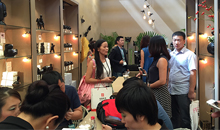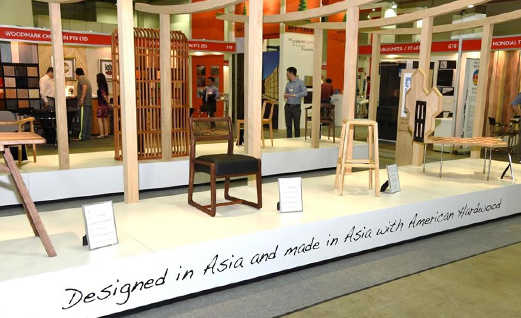Singapore Furniture Outlook (Part 2)
Singapore Furniture Outlook 2014 is a research prepared by BDO, commissioned by Singapore Furniture Industries Council (SFIC) and supported by SPRING Singapore.
(Editor: Leona)
Singapore Furniture Outlook 2014 is a research prepared by BDO, commissioned by Singapore Furniture Industries Council (SFIC) and supported by SPRING Singapore.
Productivity Measures
Productivity has long been central to the government’s push for a higher value economy with sustained innovation. In line with the drive towards greater productivity, the intention to formally measure productivity within the furniture industry in Singapore was initiated in this round of surveys.
Industry players have frequently commented that productivity is difficult to measure and track within an industry that is so diverse. However, the methodology employed seeks to eliminate such variations by benchmarking the subsectors (retailers, manufacturers, contract manufacturers) separately. It strikes as a milestone and vantage point to track the industry progress objectively going forward.

Best Practices
To enable us to understand the drivers for business excellence within the furniture industry, several leading local and international furniture players were approached for further focus discussions.

The eight critical success practices advocated by leading furniture players:

These eight success factors operate to complement each other, and it is difficult to find a leading furniture business which excels in only one, and falls short in the rest, of these factors. For example, LA-Z-BOY, the international manufacturer famous for the recliner sofas, has proven successful in adopting lean manufacturing techniques, which they term “cellular manufacturing”. The manufacturing process is governed by the 5S Principle: sort, straighten, scrub, stabilise and sustain, which has resulted in significant savings through less wastage, and higher efficiency and productivity. However, over its 87- year history, LA-Z-BOY has not rested on its laurels and taken its accomplishments for granted: it has also been successful in pursuing incessant product development policies. Its recliner may have been a hit invention, but LA-Z-BOY continued to experiment, develop and innovate until it reclined, rocked and vibrated.
Critical to the understanding of the readers, it is necessary to understand that all these factors contribute to a holistic successful furniture business. Firms that we have approached have exhibited excellence in more than one of these areas and have retrospectively attributed them to their success. As such, we hope that these could serve as a guiding direction for businesses to follow in view of unlocking the further potential of their businesses.
Local Challenges
Despite the progressive developments of the Singapore furniture industry, the sector is not without its challenges, and many have been raised repeatedly in our various conversations with industry players.
• Rising rentals
• Rising labor costs
• Rising material costs
• Lack of land for development
• Foreign worker levy has reduced pool of readily available workers
• There has been significant increase in overseas competitors entering domestic markets
• Local firms are finding it difficult to compete given the price-cost edge these countries have
• More Singapore companies need to embrace design to compete from higher ground
• More local design skill-set needs to be nurtured
• More companies to leverage on design-related grants
• Local firms lack brand recognition among local customers

It has been no surprise that the above emerged as the contending issues. Many are a result of larger macroeconomic powers and uniformly plague all players across the Singapore industry. It has to be emphasized that the industry has long faced the problems of attaining adequate resources in terms of labour, materials, and land for their operations. In return, larger players have responded in the fashion of internationalising their production units. This has left many smaller players in a perilous position, unable to garner a competitive advantage especially in terms of costs.
To add to the issue, the Singapore markets have seen a flood of cheaper products from overseas competitors in recent years. The lack of branding and marketing efforts amongst Singapore furniture brands have resulted in undiscerning customers who often value price much more than quality in their purchasing decisions.
Solutions to these issues seem fleeting at most in the immediate future, and it is foreseen that the industry has settled on the fringe of radical evolution now as we await the next revolution to strike it.
3i - The Way Forward
The furniture industry in Singapore has shown remarkable resilience and adaptability throughout the years. As a small country, it is an impressive feat to continue to find such significant levels of furniture-related economic activities present.
Amidst strong headwinds to further development, most industry players have adapted and sought solutions through internationalisation or mechanisation. However, the future poses stronger challenges and calls for greater innovation and adaptation to happen as we progress
towards a new frontier.
The advent of Ecommerce, the rise of the informed customer, big data analytics and 3D printing are the forces that furniture businesses will have to contend with as we march further into the new millennium. Moreover, although the furniture business has traditionally been a conservative one, the free capital markets are looking for a radical shift in the business’s paradigm. To ensure the continued growth and dynamism of the Singapore furniture industry, it is integral that the industry stays true to the three important pillars to sustainable growth:
“Improve, integrate and innovate.”

In this closing comment, we urge various industry businesses to think deeper upon these key pillars.
1. Improve – Productivity measures have revealed that the industry still trails international champions in these measures. Singapore firms do still have room to further strengthen and enhance their existing capabilities. Particularly among the smaller furniture businesses, wider and greater accessibility to grants that allows further automation in their operations would be greatly beneficial. That said, companies must not become dependent upon grants, and should independently and aggressively seek ways to improve their current capabilities.
2. Integrate – Complexity is a silent killer of growth. It is notable that Singapore furniture businesses are increasingly diverse and complex, cutting across segments from design to manufacturing instead of confining themselves to a single segment. There is therefore a continuous need for businesses to review all aspects of their operations internally to discover where improvements could be made and where simplicity may in fact enhance efficiency.
3. Innovate – As iterated earlier on, the industry is becoming ever more cost competitive. Forecasted potential of the industry domestically is increasingly limited. There is a pressing need for industry players to evaluate more innovative strategies in their approach to the markets. We are already witnessing some encouraging sparks of creativity amongst the local players, and other businesses in the sector will have to look to do the same. For example, KODA and Commune Lifestyle have leapt across industry boundaries by merging furniture retailing with Singapore’s prominent café culture. Another recent example is HTL Manufacturing, which has creatively turned leather offcuts into fashionable handbags.
As long as industry players can hold steadfast to these three pillars, we foresee a better furniture industry in the next few years. Companies engaging further into business design thinking, branding and marketing and business process improvement and holding strong to the principles of the 3i Strategic Framework will be able to navigate the headwinds of change and challenge.





 沪公网安备31010402003309号
沪公网安备31010402003309号



